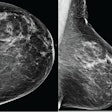
The arrival of artificial intelligence (AI) in radiology will force radiologists to take on new responsibilities to remain integral members of the healthcare team, according to a talk at the Canadian Association of Radiologists (CAR) annual meeting last month.
"You can hide your head in the sand, or you can create your own future," said Edward Lyons, PhD, of the University of Manitoba in Winnipeg, in a talk on how artificial intelligence and neural networks will affect the scope of practice of radiologists. "We have to be engineers of our own destiny."
Lyons, a past president of CAR, predicted that by 2035, CT, MR, and PET images will be read by computers, which will generate differential diagnoses using image recognition software and neural networks. This will displace radiologists from their primary function of image interpretation.
"What will we do when computers start reading all the cases faster and better than we do?" Lyons asked fellow radiologists at CAR 2017. "What will be the role of the radiologist, and how integral will he or she be to the healthcare team? We have to see this as an opportunity and not a threat."
When the radiologist was king
Looking back at the history of radiology, Lyons observed that until the 1990s the radiologist was an integral member of the healthcare team, because members of the clinical team were forced to visit the reading room where films were housed.
"When all we had was film, the radiologist was king," he said. "The clinical team came for advice to the reading room, and each [clinical] service had an assigned radiologist or [radiology] resident."
When film went the way of the dinosaur and PACS was introduced, the face-to-face interactions between the radiologist and the clinician diminished greatly, Lyons pointed out. PACS allowed computer storage of images and ready access to images across platforms even on a remote basis.
At the same time, the mandate of the radiologist became one that valued "productivity over accessibility," Lyons stressed. For the most part, remuneration became tied to the volume of images that a radiologist read.
The role of radiologists is due to change again with the arrival of artificial intelligence. Lyons cited findings discussed at the 2016 Intersociety Summer Conference, which advised radiologists to work with computer scientists on the development of deep-learning algorithms and neural networks that will interpret images.
"Radiologists will likely transform from image interpreters to machine-augmented radiology data scientists," said Lyons. "Our role will change."
Lyons suggested that radiology residents be educated as to how their future profession will transform and be engaged as consultants with clinical teams in an effort to raise their profile in clinical settings. He pointed to pilot research published in March 2014 in the Journal of the American College of Radiology in which radiology residents went on rounds with clinical teams. The experience resulted in radiologists developing a better understanding of the perspectives of clinicians, better conveying radiologic information, improving their working relationship with clinicians, and improving patient care.
The expectation that a radiologist should focus on reading large volumes of images needs to be adjusted to reflect a new reality where the radiologist is valued for acting in a consultative capacity. Similarly, remuneration needs to be adjusted to reflect new roles and responsibilities of a radiologist, Lyons said.
One specific mandate of a radiologist in the future would be to offer opinions about appropriate use of imaging resources as a means to contain healthcare expenditures, Lyons said.
"We have to recommend imaging needs," he said. "All governments are looking at ways of controlling costs."
No large-scale investigations have been conducted in Canada to evaluate the extent of inappropriateness of diagnostic imaging, but investigations in specific provinces have highlighted a need to improve appropriateness of imaging, according to CAR.
A report released in April called "Unnecessary Care in Canada" found, for example, that nearly one in three low-risk patients with minor head trauma in the provinces of Ontario and Alberta underwent a head scan in an emergency department, despite a recommendation from Choosing Wisely Canada that such a scan is unnecessary.
One question mark for the future involves the medicolegal consequences of machine-generated diagnoses, according to Lyons.
"If the machine makes a mistake, who do you blame?" he asked. "Medicolegal issues will be a challenge in the future."



















